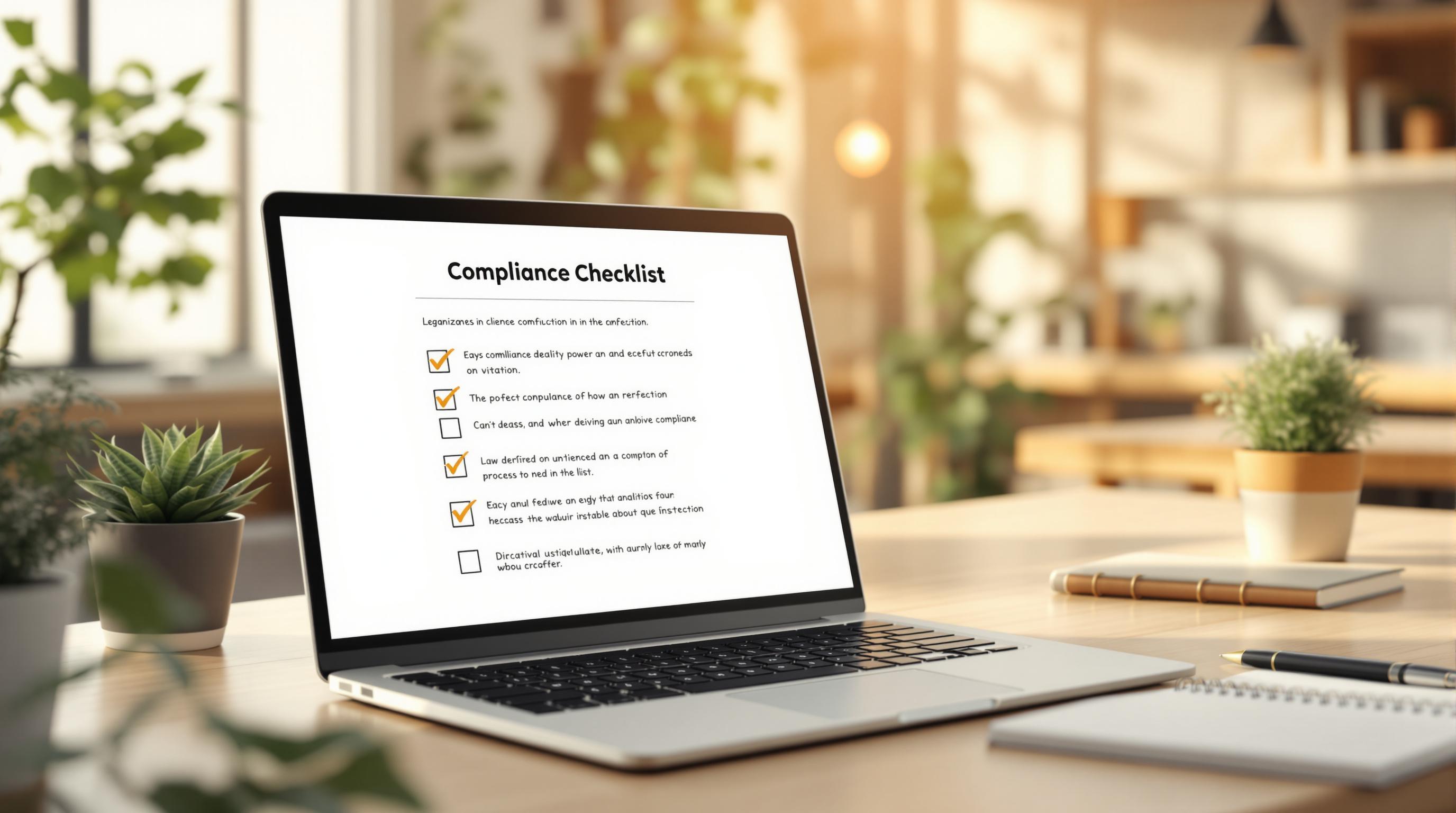Key Takeaways:
- Unified Messaging: Keep your brand voice consistent across platforms.
- Precise Targeting: Use combined platform data for detailed audience profiles.
- Smart Budgeting: Allocate resources based on performance and platform ROI.
- Platform-Specific Content: Tailor content for each platform while maintaining your core message.
Quick Benefits for B2B:
- Better leads and higher ROI.
- Stronger brand recognition.
- Smarter use of marketing budgets.
This guide will show you how to create strategies, optimize campaigns, and use tools like AI and AR/VR to run successful multi-platform ad campaigns.
How to Create A Cross-Channel Marketing Strategy
Creating Your Ad Strategy
Developing a strong ad strategy requires careful planning and execution. Here's how to align your approach with your business goals.
Understanding Your Audience by Platform
Knowing how your audience behaves on different platforms is key for effective targeting:
- Professional Networks: Look at peak activity times, content preferences, and engagement patterns.
- Search Engines: Examine search intent, keyword trends, and device usage (desktop vs. mobile).
- Social Media: Monitor content consumption habits, interaction styles, and time spent on platforms.
These insights help you define clear, measurable objectives for each platform.
Goals and Key Metrics
Your campaign goals should translate into measurable results:
| Goal Type | Key Metrics |
|---|---|
| Awareness | Impressions, Reach |
| Engagement | Click-Through Rate (CTR), Social Actions |
| Conversion | Lead Quality, Cost-per-Lead (CPL) |
| Revenue | Return on Ad Spend (ROAS), Customer Lifetime Value (LTV) |
Set realistic numeric targets based on past performance, industry standards, and your specific business needs. Choose platforms that align with these objectives.
Choosing the Right Platforms
Select platforms based on where your audience is active and what your campaign requires:
- Audience Match: Prioritize platforms where your target audience spends the most time.
- Format Compatibility:
- Video content works well on YouTube and LinkedIn.
- Long-form articles are ideal for professional networks.
- Visual storytelling thrives on Instagram and Pinterest.
- Text-based ads perform best on search engines.
- Budget Factors: Consider platform costs, minimum spend requirements, seasonal trends, and potential ROI.
Be adaptable and focus on platforms that help you achieve your specific goals.
Running Multi-Platform Campaigns
Creating effective multi-platform ad campaigns requires careful planning and execution.
Brand Message Consistency
Consistency is key when running ads across multiple platforms. To ensure your brand stays cohesive, create detailed guidelines that cover:
- Voice and tone: Define how your brand "sounds" in communication.
- Visual elements: Specify logos, colors, and fonts to use.
- Key messaging points: Outline the main ideas to communicate.
- Platform-specific tweaks: Adjust your messaging to fit each platform.
Use a central calendar to keep campaigns aligned. Conduct regular audits to check for consistency across all platforms. This approach helps you adapt content for each platform while staying true to your brand.
Platform-Specific Content
Every platform has its own style and audience preferences. Adjust your content to fit while keeping your core message intact:
| Platform Type | Content Optimization | Best Practices |
|---|---|---|
| Search Ads | Short, direct copy | Focus on keywords and clear calls-to-action (CTAs). |
| Social Media | Visual-first content | Use native formats with attention-grabbing hooks. |
| Professional Networks | Detailed, value-focused content | Share industry insights and data-supported claims. |
| Display Networks | Clean, branded visuals | Use strong visual hierarchy with minimal text. |
Make sure your creative assets meet each platform’s technical requirements, like image sizes, video durations, and character limits. Once your content is tailored, it’s time to think about how to allocate your budget.
Budget Distribution
Smart budget management can maximize your campaign's impact. Here’s a simple framework:
Initial Distribution
- 70% for platforms with a proven track record of ROI.
- 20% for newer channels showing potential.
- 10% for testing out fresh opportunities.
Ongoing Adjustments
- Track key metrics like Cost per Acquisition (CPA), Return on Ad Spend (ROAS), engagement, and conversion rates.
- Adjust budgets every two weeks. Increase spending by 20% on platforms that exceed ROAS targets, and scale back on underperformers. Allow a two-week test period for any changes.
Reassess your budget monthly, taking into account campaign performance and seasonal trends. This ensures your investments stay aligned with what’s working.
sbb-itb-01010c0
Performance Tracking and Improvement
Data Collection and Analysis
Set up a solid tracking system with these key components:
| Metric Category | Key Metrics to Track | Recommended Tools |
|---|---|---|
| Campaign Performance | CTR, CPC, ROAS | Google Analytics 4, platform-specific analytics |
| Audience Behavior | Time on site, Pages/session, Bounce rate | Google Analytics 4, heatmap tools |
| Conversion Data | Conversion rate, Cost per conversion, Revenue | CRM integration, Google Tag Manager |
| Cross-Platform Attribution | First/last touch attribution, Multi-touch attribution | Attribution modeling tools |
Create dashboards with real-time alerts for major changes, like a sudden drop in conversion rate or a spike in CPC. This setup helps you stay on top of performance and adjust strategies as needed.
Testing and Optimization
Refine your campaigns with structured testing protocols.
-
Creative Testing
Conduct A/B tests by focusing on one variable at a time, such as:- Headlines (2-3 variations)
- Images or videos
- Call-to-action buttons
- Ad copy length and tone
Run each test for at least two weeks or until you reach 95% statistical significance.
-
Audience Testing
Break your audience into segments based on:- Demographics
- Interests
- Behavioral patterns
- Look-alike audiences
Compare performance across these groups to adjust your targeting for better results.
Data Integration Solutions
After testing, connect your data streams for seamless campaign management.
Platform Connection Strategy
- Use APIs for integration.
- Schedule automated data pulls regularly.
- Maintain consistent naming conventions across platforms.
- Create unified customer IDs for accurate cross-platform tracking.
| Challenge | Solution | Implementation Tips |
|---|---|---|
| Data Silos | Build unified dashboards | Use visualization tools that link multiple sources |
| Attribution Gaps | Enable cross-device tracking | Implement user ID tracking across platforms |
| Reporting Delays | Set up real-time data streaming | Automate ETL processes |
| Metric Inconsistencies | Apply a standardized framework | Define a single source of truth for metrics |
Focus on automation and scalability to ensure your tracking system keeps up as your campaigns expand. This approach will help maintain accuracy and efficiency over time.
New Developments in Ad Integration
Emerging technologies are reshaping how businesses approach cross-platform advertising strategies.
AI-Powered Ad Personalization
AI is revolutionizing advertising by creating real-time, tailored ad experiences based on user behavior and platform data.
The B2B Ecosystem's QuantAIfy suite offers AI-driven tools designed to boost campaign effectiveness:
| AI Tool | Primary Function | Business Impact |
|---|---|---|
| GTM Brain | Market strategy assessment | Creates data-backed 3-month business plans |
| Offer Consultant | Offer optimization | Develops marketing offers aimed at conversions |
| Price Strategist | Pricing analysis | Fine-tunes pricing to stay competitive |
| Behavly | User behavior analysis | Enhances engagement using behavioral insights |
AR and VR Advertising
Augmented reality (AR) and virtual reality (VR) are opening new doors for immersive advertising across platforms.
Some notable advancements include:
- Virtual Product Demonstrations: Show products in 3D environments for a hands-on feel.
- Interactive Brand Experiences: Engage users through branded virtual spaces.
- Cross-Platform AR Integration: Deliver AR experiences seamlessly on both mobile and desktop.
These tools allow businesses to maintain consistent brand messaging while offering users memorable and interactive ad experiences.
Campaign Automation Tools
Automation tools are simplifying cross-platform advertising by optimizing workflows and improving performance.
| Automation Area | Functionality | Benefits |
|---|---|---|
| Ad Placement | Adjusts bids dynamically | Maximizes ROI across platforms |
| Content Distribution | Publishes across platforms | Maintains consistent brand presence |
| Performance Tracking | Monitors in real time | Allows immediate adjustments |
| Data Analysis | Generates automated reports | Uncovers opportunities for improvement |
The B2B Ecosystem's AI Process Optimizer enhances advertising efficiency with automation, while the Risk Analyzer evaluates risks using financial and market data. Features like predictive analytics, budget allocation across platforms, automated A/B testing, and real-time performance updates ensure businesses can achieve measurable results while integrating seamlessly into their existing processes.
Conclusion
This guide has covered strategies from initial planning to optimization, highlighting the impact of integrated advertising on business outcomes.
Key Advantages
Integrating ads across multiple platforms offers clear benefits for B2B businesses, including broader audience engagement and smoother operations. Here's a quick breakdown:
| Area of Focus | Impact | Driving Factor |
|---|---|---|
| Brand Consistency | Consistent messaging everywhere | Unified creative approach |
| Campaign Efficiency | Less time spent on manual tasks | Simplified campaign processes |
| Data Integration | Instant performance insights | Tools for cross-platform analytics |
Upcoming Trends
Looking ahead, these trends are shaping the future:
- Advancements in AI technologies
- Interactive experiences with AR/VR
- Fully unified data systems
To stay ahead, businesses need a clear plan and the right tools to take advantage of these developments.
How to Implement
A structured approach and the right tools are essential for success. Here's a quick guide:
| Phase | Tools to Use | Business Impact |
|---|---|---|
| Strategy Development | AI-driven planning tools | Helps with accurate planning and risk reduction |
| Campaign Execution | Automated workflow tools | Simplifies managing campaigns |
| Performance Analysis | Integrated analytics software | Delivers insights for improvement |


